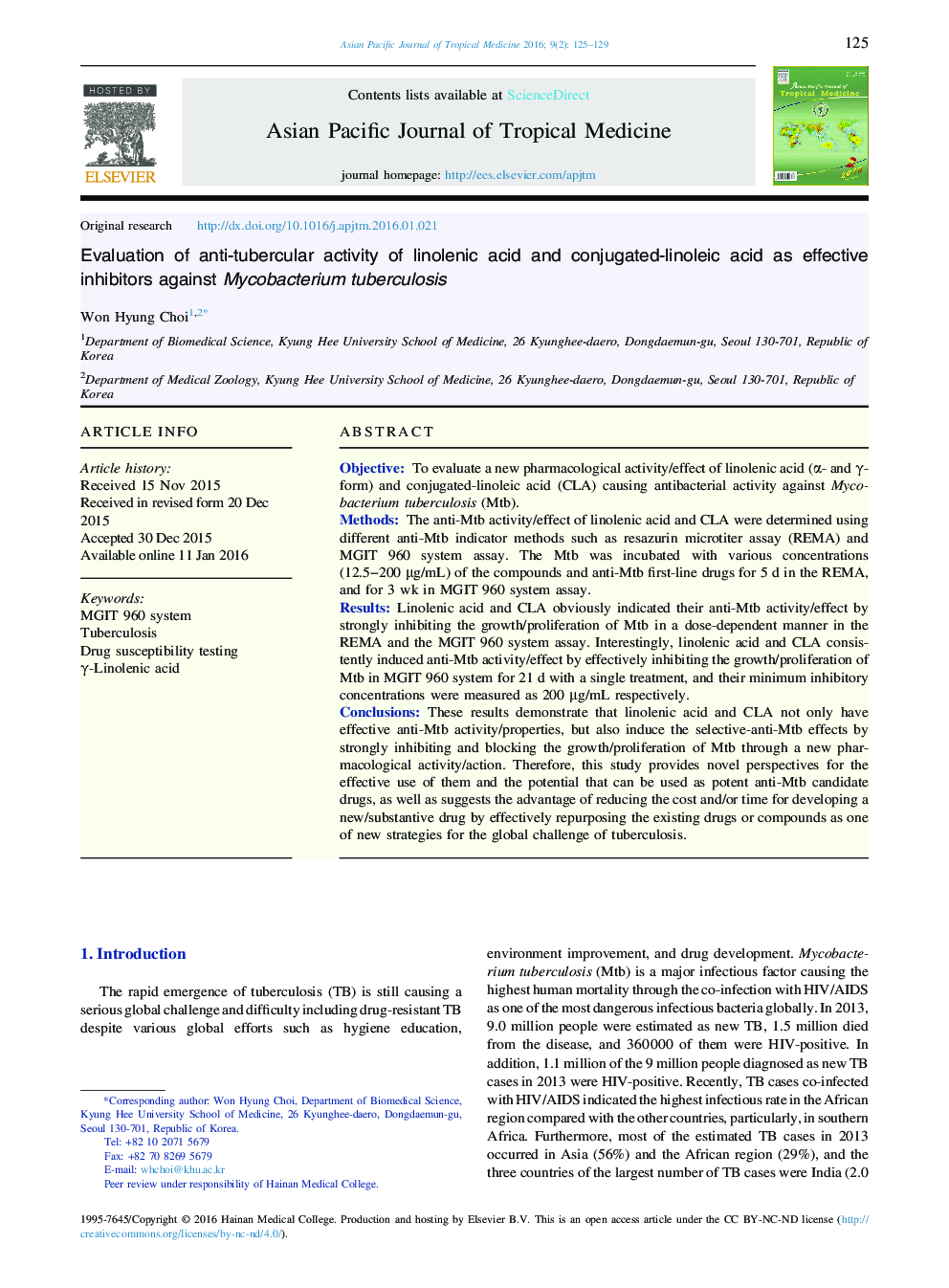| Article ID | Journal | Published Year | Pages | File Type |
|---|---|---|---|---|
| 3455240 | Asian Pacific Journal of Tropical Medicine | 2016 | 5 Pages |
ObjectiveTo evaluate a new pharmacological activity/effect of linolenic acid (α- and γ-form) and conjugated-linoleic acid (CLA) causing antibacterial activity against Mycobacterium tuberculosis (Mtb).MethodsThe anti-Mtb activity/effect of linolenic acid and CLA were determined using different anti-Mtb indicator methods such as resazurin microtiter assay (REMA) and MGIT 960 system assay. The Mtb was incubated with various concentrations (12.5−200 μg/mL) of the compounds and anti-Mtb first-line drugs for 5 d in the REMA, and for 3 wk in MGIT 960 system assay.ResultsLinolenic acid and CLA obviously indicated their anti-Mtb activity/effect by strongly inhibiting the growth/proliferation of Mtb in a dose-dependent manner in the REMA and the MGIT 960 system assay. Interestingly, linolenic acid and CLA consistently induced anti-Mtb activity/effect by effectively inhibiting the growth/proliferation of Mtb in MGIT 960 system for 21 d with a single treatment, and their minimum inhibitory concentrations were measured as 200 μg/mL respectively.ConclusionsThese results demonstrate that linolenic acid and CLA not only have effective anti-Mtb activity/properties, but also induce the selective-anti-Mtb effects by strongly inhibiting and blocking the growth/proliferation of Mtb through a new pharmacological activity/action. Therefore, this study provides novel perspectives for the effective use of them and the potential that can be used as potent anti-Mtb candidate drugs, as well as suggests the advantage of reducing the cost and/or time for developing a new/substantive drug by effectively repurposing the existing drugs or compounds as one of new strategies for the global challenge of tuberculosis.
